95 Wembdon Road
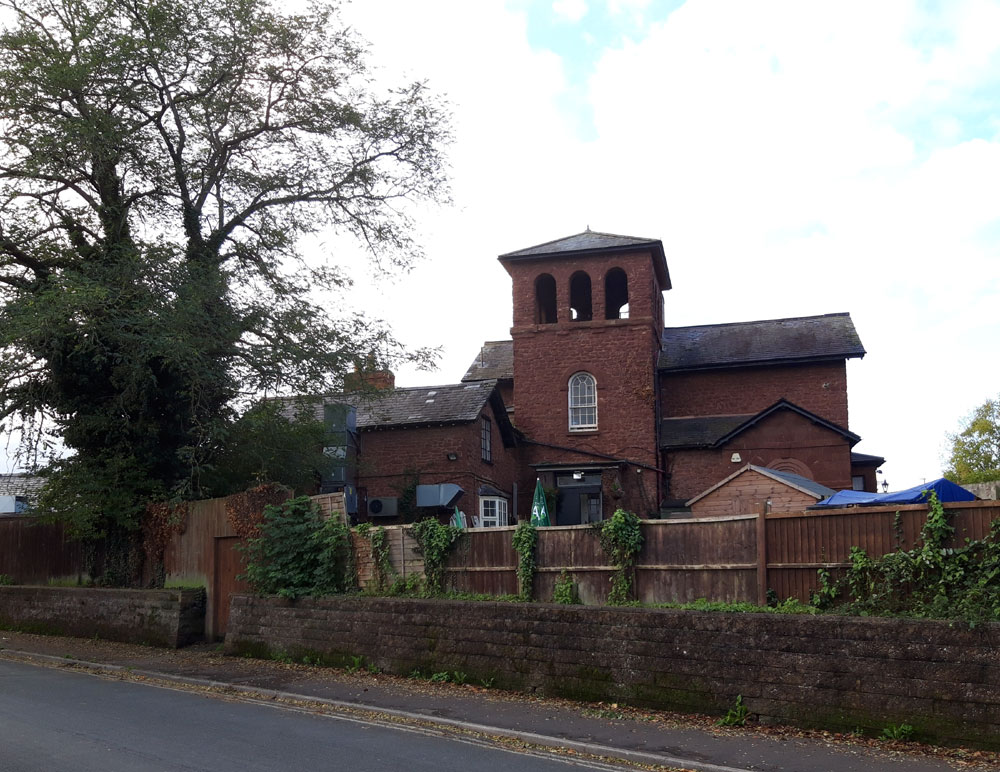
Halesleigh Tower is built on lands that were once part of the estate belonging to Bridgwater Castle. A chunk of these eventually made their way to the ownership of the Hales family of Brymore. This explains the name Halesleigh (the meadow belonging to Hales), hence Halesleigh Tower, which in turn gave the name to Halesleigh Road nearby. This field was purchased from Sir Philip Hales in 1834 by Thomas Clark, Quaker, grocer and botanist, who probably invented the name ‘Halesleigh’ and built the grand red-Wembdon sandstone house.
The distinctive Italianate tower was a viewing platform to enjoy what was wide open countryside at the time. Clark kept a diary of the weather, so the weather vane on the top would have been intended to help his observations.
THOMAS CLARK
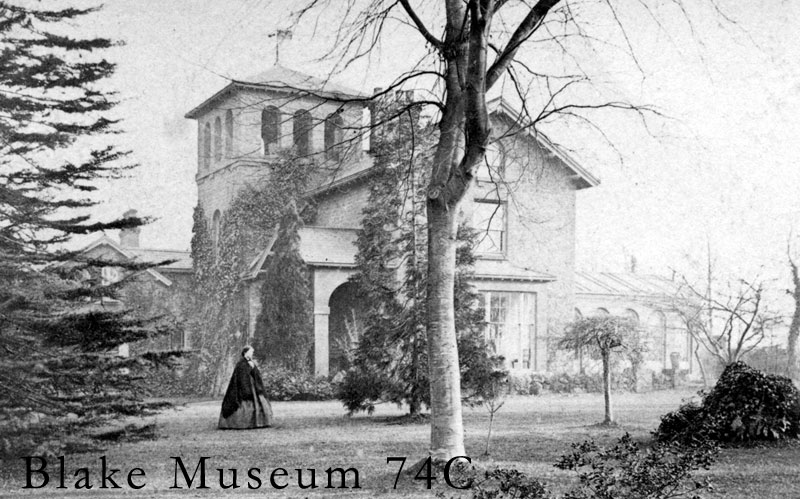
Thomas Clark was born Greinton 16 November 1793, son of Thomas Clark (d.1850) and Mary, nee Metford (d.1837). A memoir preserved in Bowen’s Life of William Baker, tells us that Clark came to Bridgwater in 1810, where he set up as a grocer. He was the brother of John Clark of Monmouth Street, the inventor. They were cousins of the Clark shoemakers of Street as well as of Mayor Francis James Thompson.
Thomas married Elizabeth Bull in 1833, so the building of Halesleigh from 1834 was presumably Thomas’ grand design so they could set themselves up in their own home. Thomas had clearly done well as a grocer, although he also held stocks and shares, such as in the South Eastern Railway. Sadly, this happy home for a new family was not to last long. Thomas and Elizabeth had one son, Lewis Clark who and died 20 March 1836. Elizabeth died the same day
About this time, Thomas’ like named father also took up residence in Halesleigh Tower. His wife Mary had died that same year. He would die in 1850. Also living there from about 1836 was Thomas’ (the younger’s) widowed sister, Sarah Metford, with her three young daughters – more on them in the next section. They presumably moved in on the death of Lewis and Elizabeth.
Although a devote Quaker, Thomas Clark was close friends with the Anglican Rev John Collins (vicar of St. John’s church in Eastover), both having a keen interest in Botany and the two, often with other friends and relatives, would go for long walks in the district looking for specimens. Thomas is known to have exclaimed “I have found it, I have found it, John Collins, Eureka!“ on finding a particularly rare flower on the Quantocks, although sadly what the flower actually was is not recorded (Sturge). A large body of Thomas’ specimens are preserved, and can be found here.
Thomas was known locally for his use of a little microscope, in a red case. On upgrading to a more powerful microscope, in 1857 he gifted this as a present to his niece Margaret Thomspon Sturge: she remembered “many a pleasant evening at Halesleigh, when he would show us hidden wonders by its aid”.
Thomas wrote “Catalogue of the rarer plants of the turf-moors of Somerset”, which was published in Somerset Archaeological and Natural History Society VII (1858) 64. He also contributed notes to various journals, more can be read here. Thomas’ nature diary covering the period 1820-1864, which is kept in Blake Museum. As well as notes about the plants he kept a meticulous record of the weather:
1820
January 1: Snow on the ground, frosty all day
2: A mild thaw all day with a little rain in the evening
3: Snow in the morning – frosty all day
4: A severe hoar frost last night and during the day – I walked with T. Clark up the river’s side in the afternoon – a great many larks were feeding by the side of the river near the town – Beneath the outer article of bark on an Old Pollard Elm near Mr Mutt’s I found Lebia 4 Macculata which dropped from my hand on trying to secure it and was lost. In a similar situation on another Pollard Elm I found a species of Lebua fromia rusedcence near to me. The only specimen of 4 mallulata which I have was from Mr Miller.
A very dense fog set in about eight o clock this evening
5: All nature is dressed in white this morning – everything is covered with beautiful hoar-frost – from sticks to the wet hand – very serene. Frost all day and the sun scarcely peeps through the fog.
6: The Hoar Frost finer to day than it was yesterday – market folks were nearly with it, particularly about the head and breasts – I never saw the trees hedges and small shrubs and plants so finely ornamented with it. The intensity of the frost slackened towards night.
7: No frost this morning – a fine thaw without rain until about four o clock when it began to freeze severely
8: A sharp black frost all day
9: Very severe frost all day – water and wet things froze in rooms containing fire all the day. Under the bark of a decaying elm near farmer Mutt’s I found several of Endomiches Coccinea and one Fomica 4 mo
10: A little snow fell last night – Frost not so severe today.
1853(?)
April 13: …of food will make great change in this form and col… I have observed them when they have been several days without food in confinement, with their thin dull and dry looking, which became bright and glossy soon after they have a taken a meal of earth-worms or slugs, the works also become larger.
15: Dr Gapper brought me to day [Paelobius Hermani, Hyphydrys feruginius leach, ovatus sandullee, leorcia Geoffrogi, Plea minut issing… Naucoris Ainicoides], all caught by him in the pit in the large field beyond Mr Robert Ford’s. The Plea I have taken in the Brick pits about the town and at Burnham, but the other I have never taken but have received them from collecting friends.
16: I went with Dr Gapper to the sand put and found all the four species abundant there to day.
18: The Taunton fish woman sent me a fish which I cannot find described in any of the books which I possess. It is a beautiful fish partaking the character of Zeus and perca – the jaw is protrusile like the Zeus and its body is deep and much compressed but not so much as that of the zeus – the first dorsal is sponous without filaments. The colour is a mixture of lake and vermilion reponing from the back to the under side (which is silvery) with traverse stripes of the same colour – see drawing.
[in pencil] Note was sent to Mr Yarrite and … in his British Fishes See … also.
Thomas Clark died at Halesleigh in 1864. He left effects under £20,000 Will proved 15 August 1864. He was buried in the Quaker Burial Ground in Albert Street, in a plot alongside his wife and son.
THE METFORDS
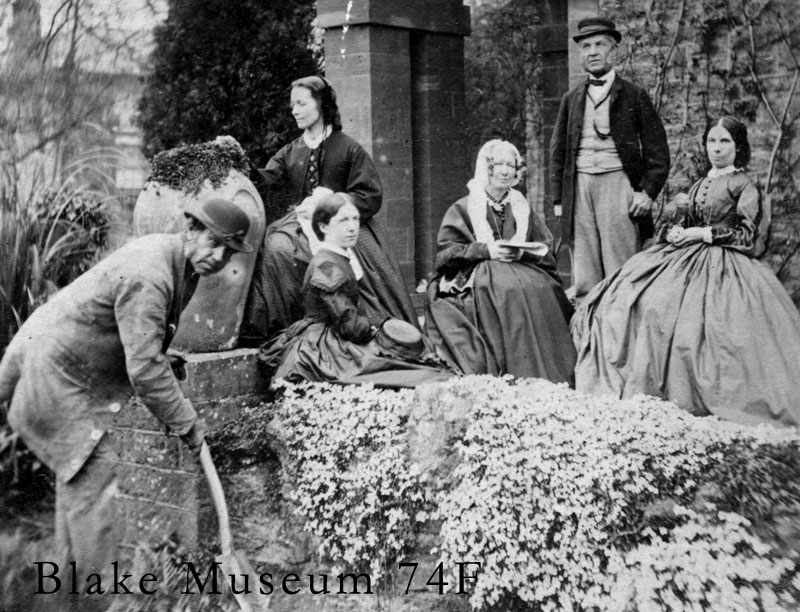
Philip J. Squibbs, whose father owned the property in a later generation, noted in his History of Bridgwater, that the next owner was Mr. G.B. Metford. Assuming he is right, this is presumably a cousin of Thomas, or one of Sarah Metford’s brother-in-laws. Exactly who this is a mystery at the moment, although a photograph of this man ‘Mr Metford’ with Sarah Metford and her three daughters survives in the collections of the Blake Museum.
By 1851 at least, although presumably much sooner, Thomas had been joined by his widowed sister, Sarah Metford, neé Clark (1801-1871). Her husband, William Metford, a wine merchant, had died in 1832, aged only 29, leaving three young daughters Isabella Metford (1830-1918), Jane Elizabeth Metford (1831-1907) and Gulielma Metford, later Reynolds (1832-1889). They would grow up in Halesleigh, were committed Quakers and had delightfully radical politics for their time.
Isabella and Gulielma, with another woman called Caroline Taylor, are notable as the only Bridgwater women to sign the 1866 mass petition requesting that the franchise be extended to women. There were a total of 1521 signatures for the country. In 1873 Isabella was attending suffrage meetings in the town and was the corresponding member for Bridgwater to the Bristol and West of England Society for Women’s Suffrage. The Metfords were still in residence in 1878 when Jane Metford of Halesleigh Tower, wrote Letters to William Lloyd Garrison, the American abolitionist, journalist, suffragist, and social reformer), converning anti-slavery. These are preserved in the Boston Public Library.
While at Halesleigh, Isabella Metford was charged with keeping a dog without a licence in 1877, having ignored several notices to get one (West Somerset Free Press 16 June 1877). She was fined again the following year for being ‘at large and unmuzzled’ (Western Gazette 12 April 1878).
Sadly the 1871 census for this part of Wembdon Road does not survive. The Metfords seemed to have left Halesleigh in 1879. Gulielma married Frederick Reynolds and had several children. In later life Isabella appears, at least by 1911, to have lived with two of these Roland Exton Reynolds (1871-1922) and his sister Ioan Berenice Reynolds in Glasfryn, Dinas, Powys.
THE FOSTER-BARHAMS
In John Whitby & Son’s 1883 Directory of Bridgwater, the owner of Halesleigh is listed as Thomas Foster Barham (1852-1927). He was born in Bristol on 21 February 1852. He was the son of solicitor, a Cornishman, Eustace Foster Barham and Ellen Hore. He was named after his grandfather, the famous musician. On 17 July 1879 in St Petersburg, Russia, Thomas married Sarah Marian Prince, who had been born in Scarborough, the daughter to the American Ambassador to Russia, who was four years his junior.
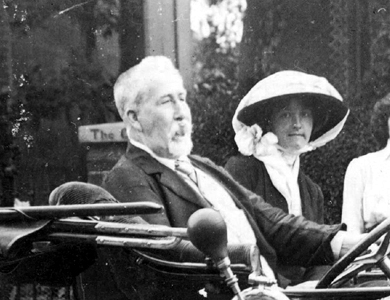
By 1881 Thomas and Sarah had set up home on the Wembdon Road. They employed a cook and a housemaid. He was working as a solicitor in his father’s firm and was serving as a Captain in the Bridgwater Company of the Somerset Volunteers. In around 1875 he had joined the Bridgwater Company of the 2nd Admin Battalion of the Somerset Royal Volunteer Corps. The 2nd Admin Battalion became the 2nd Volunteer Battalion of the Somerset Light Infantry in 1882. This was when he became the commanding officer of the ‘I’ (Bridgwater Company), also referred to as the Bridgwater Rifle Corps. When the new town bridge was opened on 5 November 1883, the Mayoress unlocked a chained padlock with a silver key and Captain Barham called the Rifles to present arms, before the national anthem was sung. The band of the rifles then led the procession to the Town Hall for a banquet. Barham would again lead the rifles in 1887 during the Jubilee of Queen Victoria, when they fired a feu de joie at the Cornhill.
The couple later moved to Elmwood House in Hamp. Thomas rose to the rank of Colonel, and during the First World War led the town’s Volunteer Training Corps, the local defence force.

THE TREVORS
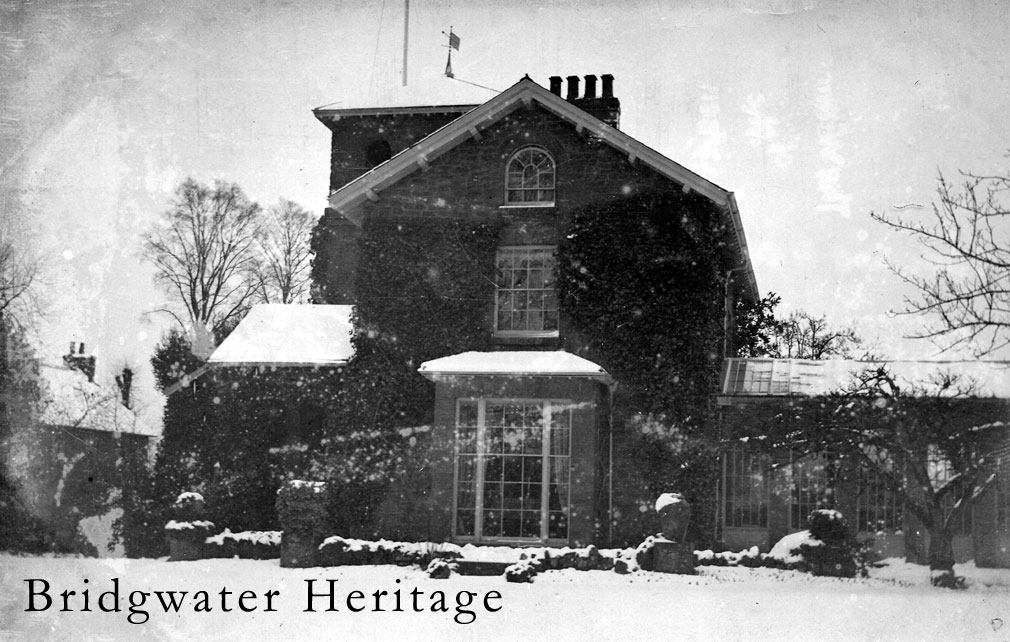
In 1889, Halesleigh was purchased by Edward Trevor (1858-1945) and his new wife, Kate, nee Burrington (1859-1934). Like Foster-Barham, Edward was a solicitor and part-time soldier, rising to the rank of Colonel in the local volunteer/territorial force. He retired from the force in 1910, although returned to help in the First World War, when he was commander of the local reservist battalion. In 1916 Trevor was recorded as the Chief Recruiting Officer for the district.


The Quantock Road was built in 1924 and took away a chunk of the south-most portion of the gardens.
Kate was very active in supporting St Mary’s Church, Bridgwater Hospital and the local Nursing Association and helped to organise the annual ‘Pound Day’ for the hospital. She was also chairman of the Bridgwater Women’s Conservative Association, Edward being also being an active Conservative supporters. After a long illness she died in 1934. Sadly after this time Edward seems to have found it hard to cope and lost control of his finances. In 1940 he retired as Magistrates’ Clerk, after 55 years’ service on the bench. He was convicted of embezzlement a client’s money in 1944 and sent to prison where he died in 1945, a very sad end to an otherwise distinguished life.
In 1937 Whitby’s directory noted Edward Trevor as still in residence, although he must have moved on by December that year.
THE SQUIBBS
In an article of the Taunton Courier and Western Advertiser of 11 December 1937, Mr Henry James Squibbs is noted ‘of Halesleigh Tower’. This was in an action he bought against Bridgwater Town Council regarding their demolition order for 3 Woodridge’s Buildings, Mount Street. This was Squibbs’ test action against the proposals to demolish all five of the Buildings, which were uninhabitable at the time, although he argued he would make them so. However, the case was lost and the demolition proceeded.
Henry James Squibbs died in December 1943. The following appears in the Taunton Courier and Western Advertiser for Saturday 1 January 1944:
A memorable municipal election at Bridgwater is recalled by the death, which occurred suddenly on Sunday, of Mr. Henry James Squibbs, Halesleigh Tower, Wembdon Road. Mr Squibbs, who was 68, appeared to be quite well on Christmas Day, when he received visits from his children and grandchildren, and spent part of the day in his garden.
A son of the late Mr Robert Squibbs, auctioneer and furnisher, The Cornhill he carried on business at one time as a furnisher at premises in Eastover, now occupied by Messrs Woolworth, and also at the Bridgwater Wicker Works Lts, Mount Street, which business is now under the control of two of his sons, Messrs Philip and Robert Squibbs. His two other sons, Antony and Benjamin, are in partnership as auctioneers and estate agents in High Street, the latter being at present in the RAF and his only daughter is Mrs Harry Van Trump, of Haygrove Cottage, Durleigh. Mr Squibbs first wife died about 12 years ago and some years later he married again. He retired from active business about eight or nine years ago.
It was in 1929 that Mr Squibbs after conducting a campaign against the Town’s Association which selected and supported candidates, stood with two of his sons for the Town Council. Mr Antony Squibbs, who headed the poll and his father who was next, were elected and about two months later, Mr P.J. Squibbs, who had been unsuccessful before. Was elected to fill a casual vacancy. As a result of Mr Squibbs’ agitation the Town’s Association was disbanded. Heated debates arose in the Council Chamber between Mr Squibbs and his sons and the rest of the Council, but after about two years service Mr Squibbs and his sons retired.
Mr Squibbs was educated at Dr Morgan’s school and in his younger days was a keen runner cyclist and Rugby player, playing at one time for Bridgwater Rugby Club.
The interment in the family grave at Wembdon Churchyard on Thursday was preceded by a service at Wembdon Church. The vicar of St Mary’s, Bridgwater (preb. E.H. Hughes-Davies), assisted by the curate (the Rev.C.N. Howell), officiated, Mrs Kuner, who was at the organ, played Mendelssohn’s ‘Consolation’, and ‘O Rest in the Lord’, the hymn ‘Abide with me’ was sung. [List of mourners omitted]
Squibbs’ second wife seems to have remained at the property after his death. She died in September 1947: ‘the funeral took place at Wembdon Churchyard on Friday of Mrs Mary Squibbs of Halesleigh Tower, Wembdon Road, who died on Tuesday at the age of 54, after having been ill for about a month… Mrs Squibbs will also be remembered as a keen cage bird fancier’ (Taunton Courier and Western Advertiser 20 September 1947). After her death the property was sold.
THE QUANTOCK GATEWAY
In 1947 Halesleigh Tower was put up for sale at auction. The Western Daily Press 16 October 1947 notes ‘valuable main road frontages, with Building Land. Plans for erection approx. 40 houses passed by Local Authorities… Accommodation comprises 3 reception 4 main 2 secondary bedrooms, bathroom, lavatory, cloakroom, convenient office, garages, aviary, greenhouses, grounds, veg gardens, two paddocks, whole extending to 5 acres 1 rood 20 perches (more or less).’
However, the following report was noted in the Taunton Courier, and Western Advertiser on 1 November: HALESLEIGH TOWER WITHDRAWN AT £7250: One of the most attractive residential estates in Bridgwater, Halesleigh Tower, home of the late Mr H.J. Squibbs, comprising the residence grounds and five acres of building land adjoining the Quantock and Wembdon Roads, failed to reach the reserve, and was withdrawn at £7250 at the auction in the Bristol Hotel on Wednesday. A number of enquiries have, however, since been received by the auctioneers, Messrs A & B Squibbs, and a satisfactory sale is expected. Large crowds visited the house on Thursday and Friday, and there was keen competition for the valuable contents of the residence, which were disposed of by Messrs Squibbs, in conjunction with Messrs Tamlyn & Son.
The Taunton Courier and Western Advertiser for 12 March 1949 reported: Applying on behalf of Mr Sidney H. Fursland for removal of the licence of the Compass Inn, Wembdon Road, to Halesleigh Tower, at the junction of the Quantock and Wembdon Roads, Mr F.W.Willmot said Bridgwater had progressed enormously in industry in the past few years and was apparently still doing so, being the envy of adjoining towns in that respect. At Halesleigh Tower there would be bars to suit all classes, a room for dancing and a restaurant.
Evidence in support of the application was given by the applicant, Mr. S.H. Fursland, Compass Inn; Henry Aldridge, foreman, Quantock Road; Guy Brett, manager, Coronation Road: Thomas Gray, manager, Alexandra Road; Mr Michael Slade, director, Starkey Knight & Ford Ltd, brewers; Mr. F.H.J. Gabbutt, architect, Burnham.
The Justices agreed that the licence be removed on July 1st to Halesleigh Tower, subject to undertakings by Mr Willimott that suitable toilet accommodation be provided forthwith or as soon as a licence could be obtained, and that as soon as building facilities became easier, the other proposed alterations would be carried out.
The adjoining paddock and part of the garden were being developed in 1950 (Somerset Heritage Centre A/CMY/218), presumably becoming Brymore Close.
In 1960 the premises is listed as the Quantock Gateway Hotel in the Kelly’s Directory. Mrs M.S. Washer was listed as the proprietor.
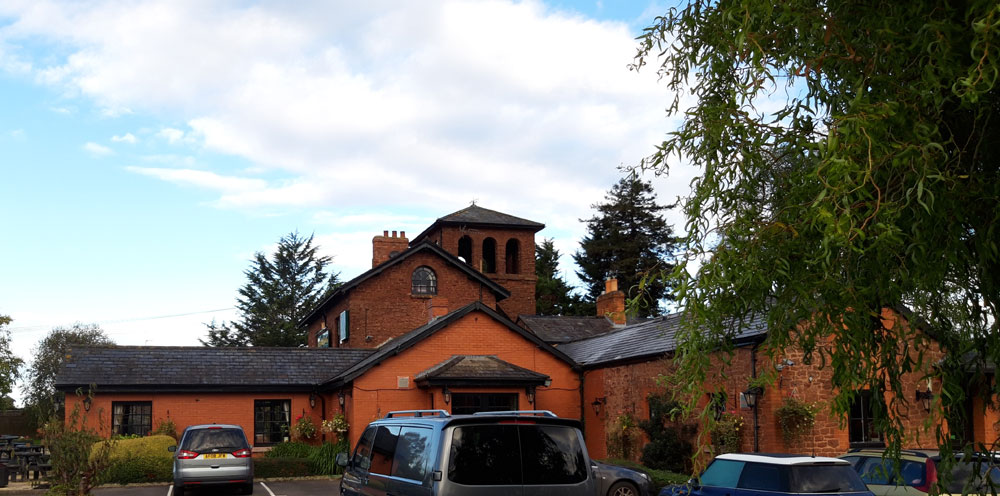
MKP 30 January 2022


